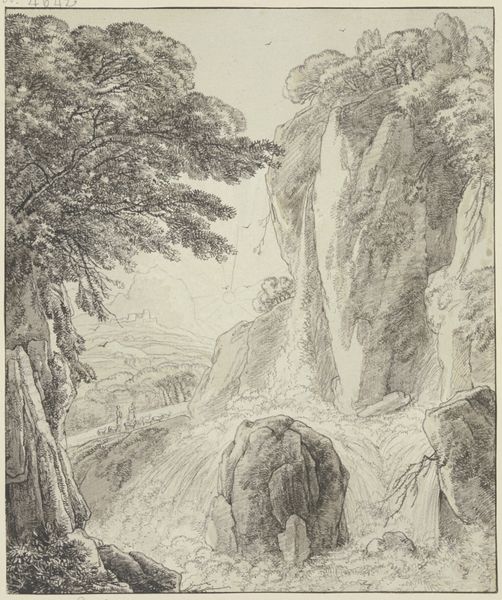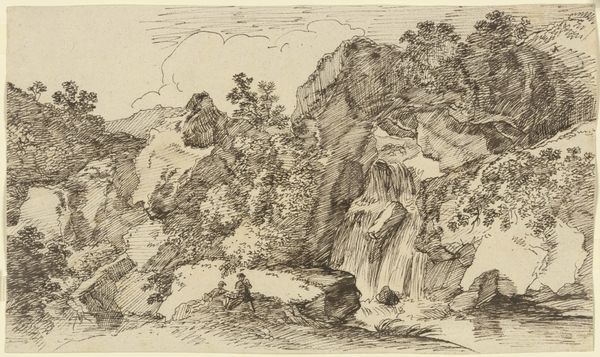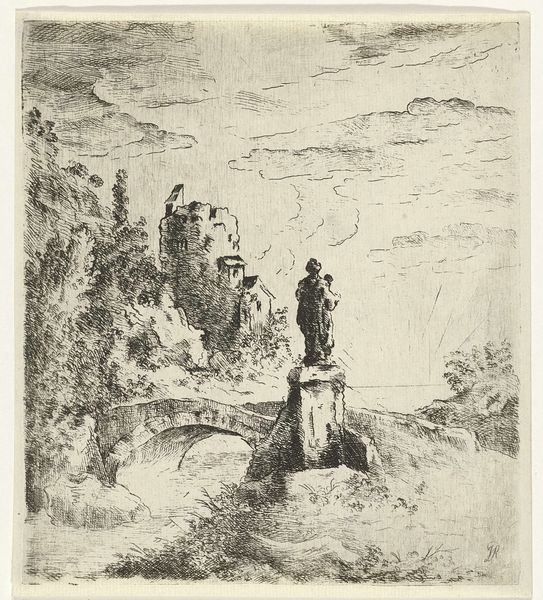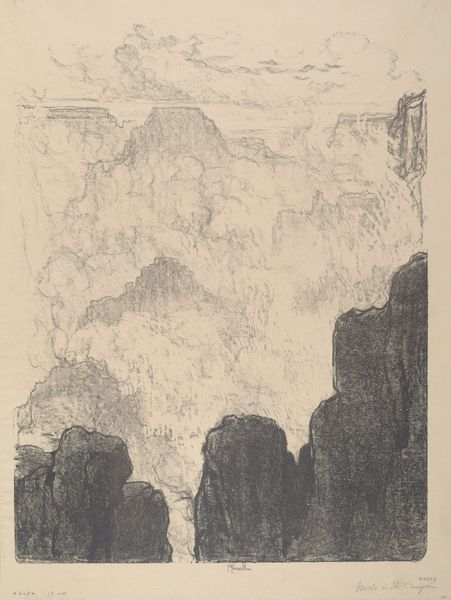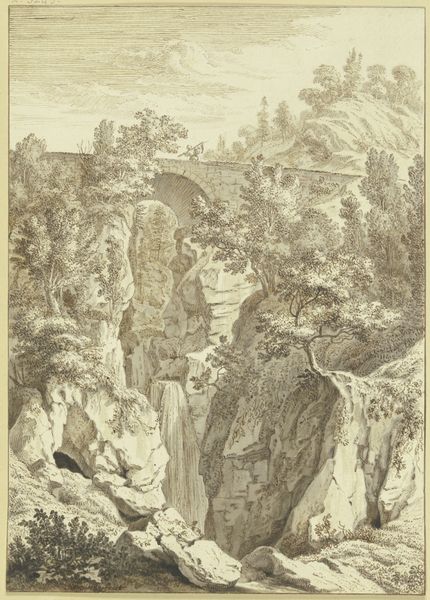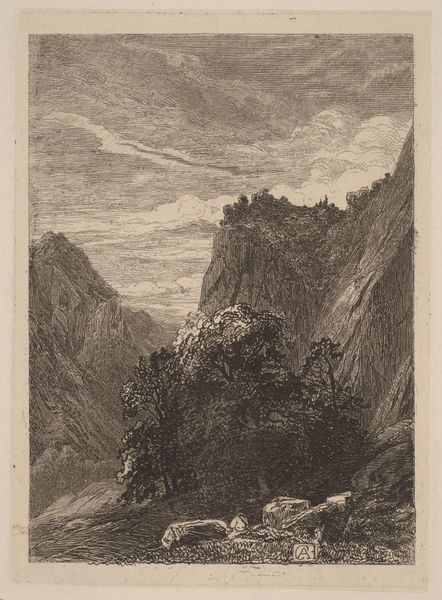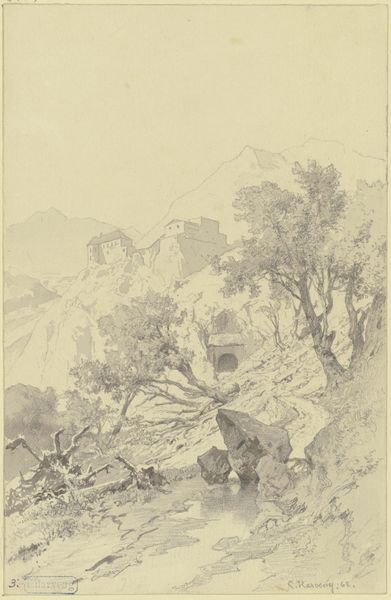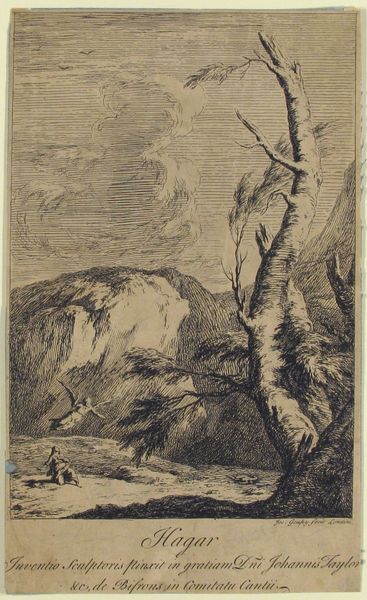
Gebirgslandschaft mit einem Wasserfall, im Vordergrund überquert ein Wanderer eine Holzbrücke
0:00
0:00
drawing, ink, pen
#
drawing
#
ink drawing
#
landscape
#
figuration
#
ink
#
romanticism
#
line
#
pen work
#
pen
Copyright: Public Domain
Curator: This pen and ink drawing is titled "Mountain Landscape with a Waterfall, in the Foreground a Hiker Crosses a Wooden Bridge." It’s attributed to Franz Kobell and resides here at the Städel Museum. What's your immediate response to this landscape? Editor: There's a real sense of depth and drama created through such delicate, spidery lines. The towering rock formations almost overwhelm the lone figure on the bridge, creating a sense of human insignificance in the face of nature. Curator: It definitely encapsulates the Romantic ideal, doesn't it? Kobell wasn't simply representing a scene; he was likely attempting to evoke an emotional response. Landscape art at this time—the exact date of this work is not fully known, but it would have been sometime around the late 18th to early 19th century—played an important role in constructing national and cultural identity, particularly in Germany. Editor: Absolutely. And the waterfall acts as a powerful symbol here. Water, of course, has cleansing, transformative properties. This journey across the bridge and past the waterfall could be interpreted as a visual metaphor for the soul’s journey, facing challenges and finding renewal in nature's embrace. The lone wanderer reminds me a lot of the "wanderer above the sea fog". Curator: Precisely. There's also a commentary about nature in art and culture emerging during industrial transformation; these artworks emphasize pre-industrialized European life and customs, nostalgia, spirituality, and the sublime. The very act of rendering the landscape in such detail, with the focus on nature's grandeur, also functioned as a statement. Editor: The way the ink lines mimic the flow of water and the rough texture of the rocks is truly evocative. Even without vibrant colors, you feel the cool dampness and hear the rushing water. The symbolism of crossing a bridge, as well, reinforces transition— leaving something behind and stepping toward the unknown. Curator: These pieces are more than topographical documents. It reflected evolving ideas about man's relationship with the environment and functioned within the socio-political spheres. It gives an appreciation of how society was shaped by the rise of new nationalistic feelings tied with the organic world. Editor: Yes, you've given me fresh insight into the symbols in this composition; it becomes a beautiful reminder of our enduring connection to the natural world, and those enduring cultural associations surrounding water and journeys and the unknown. Curator: A testament to how art continues to provide insight into understanding society.
Comments
No comments
Be the first to comment and join the conversation on the ultimate creative platform.


